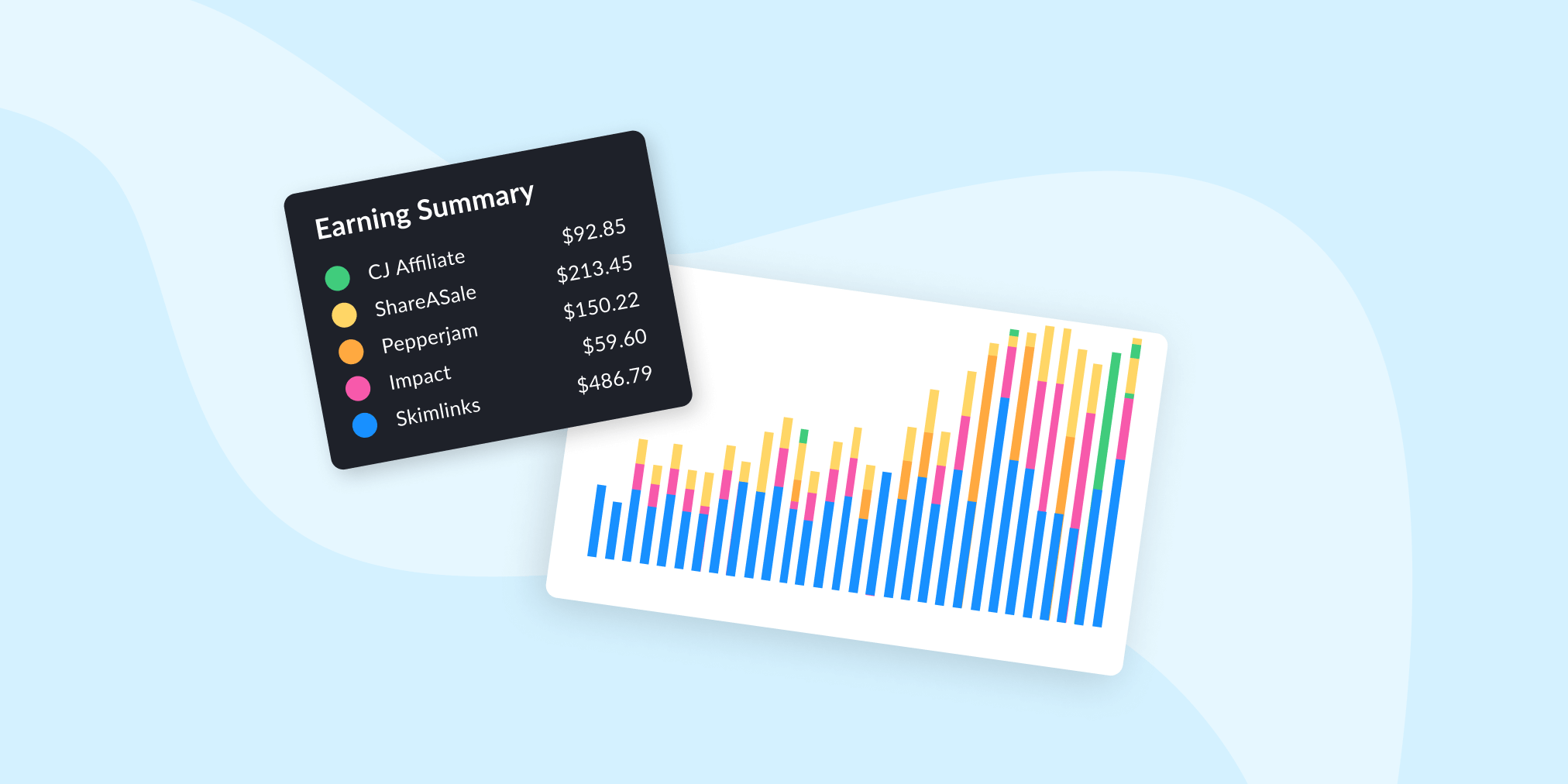How to Start Affiliate Marketing in 2024 (7 Simple Steps)
Thousands of independent creators, entrepreneurs, and online publications use affiliate marketing to drive millions in revenue every single month.
So do hugely respected websites such as the New York Times, Forbes and NerdWallet.
And according to Statista, spend on affiliate marketing programs by businesses grew to $8.2 billion in the US last year. That's up 76% in the last 6 years alone.
But getting a slice of the billion-dollar pie isn't as simple as slapping a few affiliate links on your blog.
In fact, most beginners who try affiliate marketing fail to see the financial results they were promised by countless blogs and videos on the internet.
Read on to avoid common mistakes that hold beginners back, plus the most important affiliate marketing tips to help you become successful, sooner.
Here's our guide to start affiliate marketing the right way:
- Research your niche
- Choose the right platform
- Pick profitable affiliate programs
- Create optimized affiliate content
- Drive traffic to your affiliate site
- Build a simple affiliate marketing funnel
- Track and increase your affiliate sales
But first, a few affiliate marketing fundamentals you need to know.
What is affiliate marketing?
Affiliate marketing is a business model where brands share revenue with publishers and content creators in exchange for leads and sales. It works similarly to a salesperson being paid a commission for a successful sale.
The more sales you make, the more money you earn. Affiliate commissions can range from cents on the dollar to hundreds of dollars per referral. Done right, affiliate marketing could help you earn more than your current job or diversify the revenue of an existing content business.
Here's an overview of how affiliate marketing works:
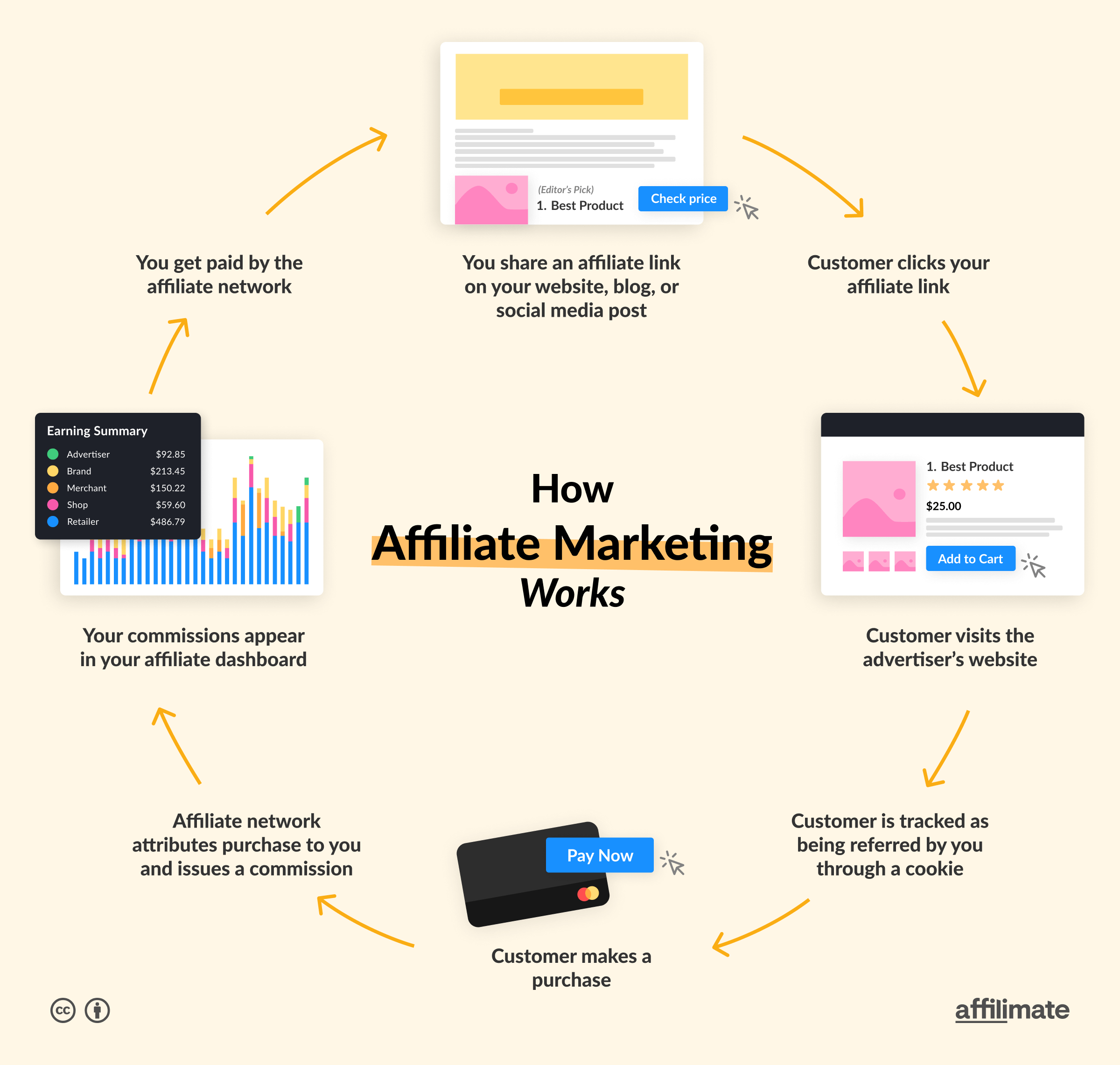
- You share an affiliate link on your website, blog, or in a social media post
- A customer clicks your affiliate link
- Customer is redirected to the advertiser website
- Customer is tracked as being referred by you through a cookie
- Customer makes a purchase
- An affiliate network attributes the purchase to you and issues a commission
- Commissions appear in your affiliate dashboard
- You get paid (!) by the affiliate network
There is no single profile for a successful affiliate marketer. They range from independent entrepreneurs to teams at well-known news outlets and online publications.
And since you aren’t responsible for the delivery of a product or service, affiliate marketing is low risk. You don't need a degree in marketing or any specific qualifications to be a successful affiliate marketer. With the right resources, almost anyone can generate affiliate revenue.
In today’s world, the success of an affiliate depends heavily on their ability to capture an audience and attract the right kind of traffic. To do that yourself, you need to craft quality content and optimize it for conversion.
And it all starts with understanding and creating affiliate links.
What is an affiliate link?
The main way affiliate marketing works is through affiliate links. Affiliate links are trackable links with a unique URL assigned specifically to you. They help advertisers know that you sent them a specific customer, so they can pay you a commission if that customer makes a purchase.
Here's an example of the structure of a typical affiliate link:

The most important thing to know as a beginner is that in order to earn a commission, the customer who converts needs to come through your unique affiliate link.
Then there's the way you earn your commissions. For the most part, there are two main models for earning affiliate revenue:
- CPA (Cost Per Action): You earn every time someone from your audience completes an action. Depending on the program, the action could be making a purchase, starting a free trial, or filling out a form with contact information.
- CPC (Cost Per Click): You get paid for clicks the advertiser considers to be quality visitors, even if they don’t complete a specific action.
Different affiliate programs will offer different payment models, and some may even pay you for both leads and conversions. We'll cover how to pick good affiliate programs later in this guide.
While you're here, here are a couple more key affiliate marketing terms you should get familiar with. These will also help you pick affiliate programs with a high earning potential:
- Cookies: Cookies are small files that are stored on a customer’s device when they click an affiliate link. They help businesses and affiliate networks remember that you referred the customer to them, so they can give you a commission later on.
- Cookie duration: Cookies typically have expiration dates. Affiliate links tend to have expiration dates between 15 to 30 days, but they can run for as little as 24 hours up to a year or more. Cookie duration matters to affiliate marketers because customers may come back to a purchase days or weeks after a customer first clicks on an affiliate link.
- Affiliate networks: Brands typically set up their affiliate programs on third party platforms called Affiliate Networks. These platforms bring brands and affiliate marketers together. There are dozens of affiliate networks, with the most popular including Impact, Flexoffers, Clickbank, PartnerStack and Rakuten.
Is affiliate marketing worth it?
As an affiliate marketer, your earning potential is unlimited. And how many people can say that?
How much you earn depends on you, your chosen niche and your ability to optimize your content and revenue streams. But that doesn't mean that most affiliate marketers end up becoming online millionaires.
According to PayScale, the average Affiliate Marketer earns between $3,000 and $6,000 per month (or, $36K to $72K annually).
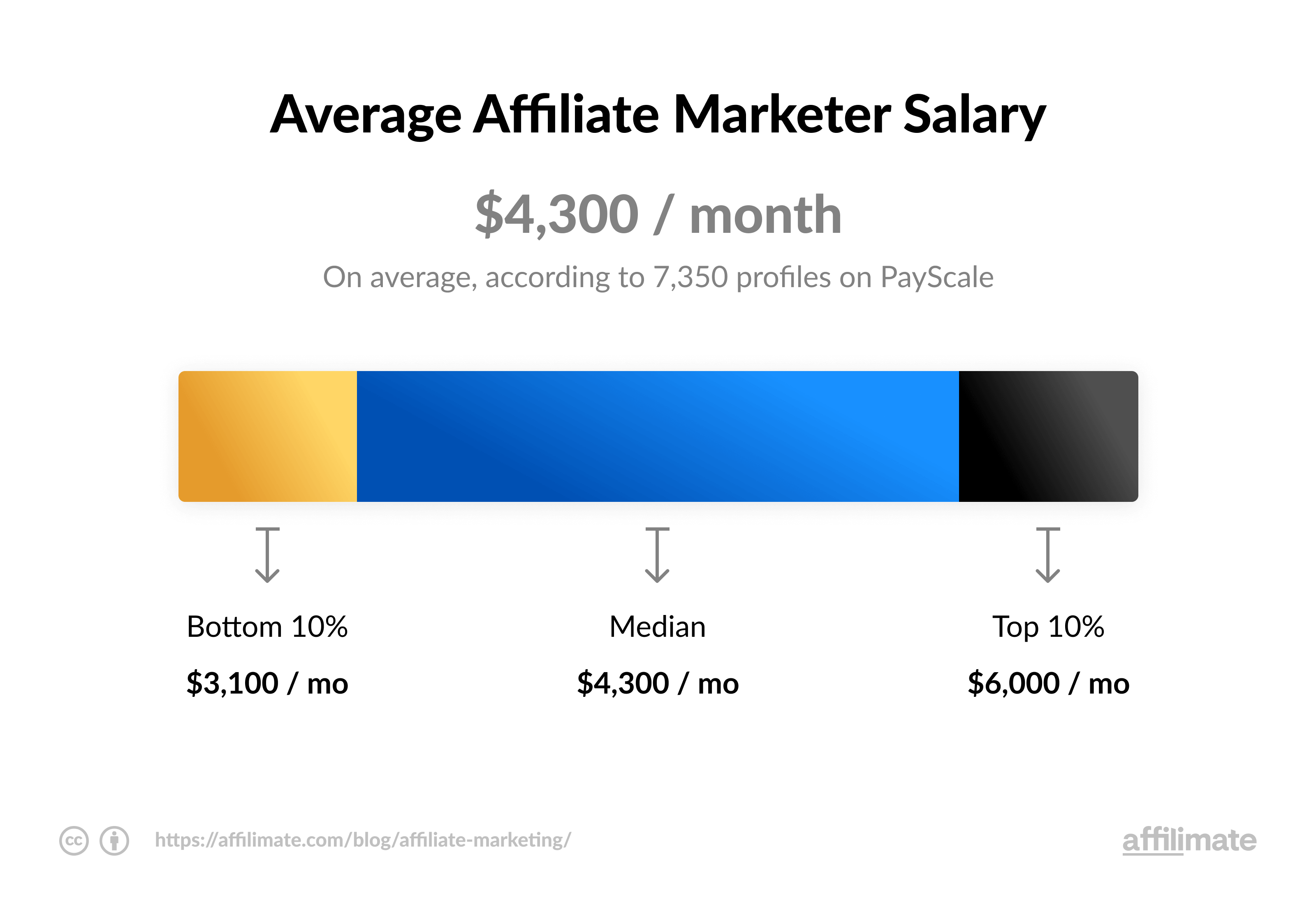
And the top 1% of earners generate tens of thousands or even hundreds of thousands of dollars per month. They tend to be full-time affiliate marketers with dedicated teams, and several years of experience.
But you don’t have to go full-throttle to create a sustainable business. The best part of affiliate marketing is that it can supplement your 9-5 income from day one.
And with enough patience and dedication — replace it entirely.
7 steps to get started with affiliate marketing
The biggest, open secret to affiliate marketing is that your earning potential is highly dependent on the niche you choose. That is, what kind of audience you want to serve and the types of products that audience needs to buy. So you need to know what to look for in a niche before launching your affiliate marketing business.
Here are the steps you need to get right from the beginning:
Step 1. Choose a niche based on research
Rushing to catch the latest fads can lead to trouble when these trends end faster than they appear (fidget spinners, anyone?).
Doing niche research is the best thing you can do to make sure your affiliate business has high earning potential and will make money for years to come.
In the process, you'll analyze the competitive landscape, learn about affiliate programs available in your niche, and be able to create a sustainable affiliate marketing strategy and content plan.
Here's an overview of the niche research process:
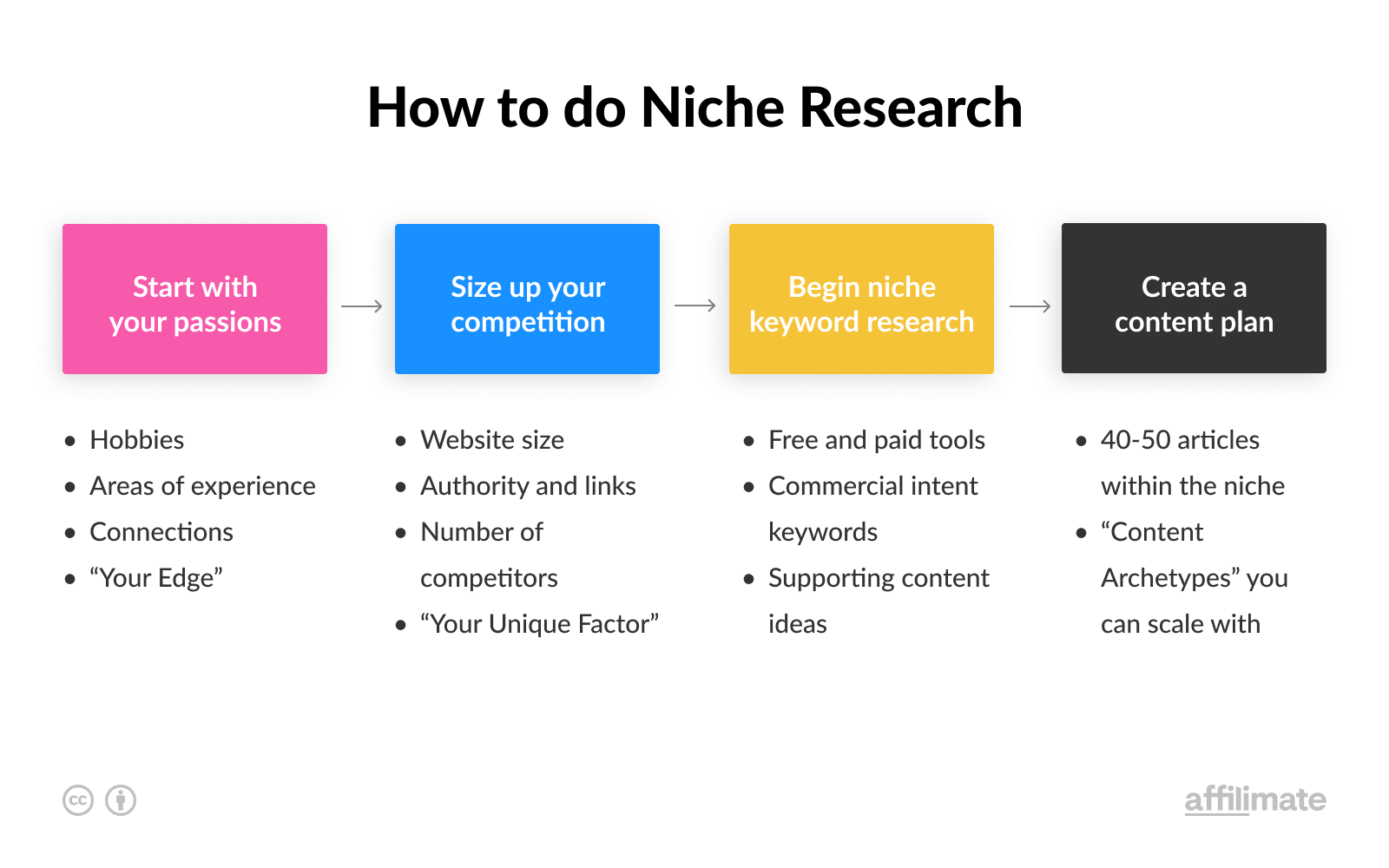
If you’re looking for niche ideas, there are plenty of free niche research tools that will help you get the ball rolling. Just quickly, here are three popular tools for niche research:
- Google Trends – Trending topics and searches, organized by geography
- Answer Socrates – Find out which questions people type into Google
- Exploding Topics – A Google Trends alternative with curated results
That said, if you're starting affiliate marketing with no money or a small budget, I recommend picking a topic you're passionate about. That way, you won't get bored or hate your niche when you're writing 50+ articles on the topic.
But a topic you like isn't enough — it needs to be able to make money.
Again, tools like Google Trends are good for vetting niches that you discover and making sure they're not just passing trends. In all likelihood, you're going to want to choose an evergreen niche which generates income all year, every year.
Finally, it’s also important to understand the competition to find your entry point into the market.
You might want to start a blog about web hosting (one of the most lucrative affiliate niches), but the amount of capital and content it takes to compete might be out of reach for beginners.
Look for medium-competition niches, where there are a few established players, but you can better serve a smaller audience, distinguish yourself, and expand later on.
For example, instead of "web hosting" for everyone, you could start with "salon website builder" and focus on teaching professionals in the beauty industry. By starting niche, you can build a tight-knit community around your brand and even gain an advantage in ranking on Google.
Further reading: Niche Research: 5 Steps to Finding Profitable Affiliate Niches
Step 2. Choose the right platform
With a niche in mind, it's time to decide where to host your affiliate content and what type of content you want to create.
There are two main choices for affiliates starting out: a website or a YouTube channel.
YouTube can be an excellent place to grow an audience, build a brand, and promote affiliate products to an audience that trusts your recommendations.
But there are some downsides to starting with only a YouTube channel:
- Video takes longer to produce than written content. Which limits the amount of content you can create when starting your project.
- Videos are harder to outsource. Especially if you're the face of the channel, it means you'll need to be involved with every video.
- Harder to grow your email list. YouTube doesn't have a built-in way to collect email subscribers. Yet email is one of the most effective channels for affiliate marketing.
- YouTube channels tend to make less affiliate money. There's simply more friction to getting clicks on your affiliate links from a video compared to a well-optimized blog post.
Ultimately, it's great to have both a website and YouTube. Embedding videos on an affiliate website is also an excellent way to boost conversion. But if you're a total beginner, you'll probably find it easier to start affiliate marketing with a blog.
WHEN IS YOUTUBE A BETTER CHOICE?
YouTube is probably a better choice when you're entering an ultra-competitive niche. For instance, if you want to promote credit cards or teach your audience about email marketing. Since video is a more complex medium to master, that also means there's less competition and you can lean more on your personality to build trust and stand out.
Step 3. Pick profitable affiliate programs
Signing up for affiliate programs is easy. But spreading yourself too thin is one of the top affiliate marketing mistakes beginners make.
You want to start with a finite number of affiliate programs with good commissions, solid conversions, and reliable demand.
Here are three key ways to pick a good affiliate program:

First, assess earning potential
Affiliate programs vary greatly in terms of payment scale. Some programs offer a few cents per conversion. Others pay out hundreds of dollars for a single lead.
Programs with lower payouts are often easier to join and promote, which makes them appealing but require a higher number of sales for the same amount of revenue.
Here are the three main ways to make your affiliate math "work out":
- High volume, low commissions. This includes most Amazon affiliate sites. To earn $5,000 per month from 5% commissions, you need to generate $100,000 in revenue for Amazon. If the average customer spends $100, that's 1,000 orders to reach $5K in earnings. To do well here, you usually need a lot of traffic (meaning, a lot of content).
- Low volume, high commissions. For example, luxury affiliate programs (expensive watches or luxury fashion) and photography affiliate programs (expensive camera equipment). Both are more niche, but require fewer conversions to reach a revenue goal.
- High volume, high commissions (...and high competition). Financial affiliate programs (like credit cards and bank accounts), or SaaS affiliate programs (like web hosting and email marketing tools) are both good examples. These programs are so profitable, you may struggle to compete.
While you're at it, check the affiliate program's cookie duration. Longer cookie durations (over 30 days) give you time to get your audience to a buying decision.
Shorter cookie periods can still be effective for those customers who have already made the decision to buy. If you choose to work with programs with shorter cookie durations, be sure that your content targets people later in the buying journey.
I'll explain how the buyer's journey fits into affiliate marketing in a second.
Second, assess the competition
Some competition can be a good sign. If other people are doing well in the niche, there's a good chance you can too. The easiest way to find competitors is to simply google for the kinds of search terms you'd love your website to show up for.
Then, check which affiliate programs your competitors are promoting most heavily on those pages. Find out what terms they offer, and how to join the program.
This is one of the most effective ways to vet affiliate programs, as long as your competitors are further along than you are.
BEWARE A LACK OF COMPETITION
No competition might sound like a good thing, but usually means the niche is not viable. Or worse, they've already tried, failed, and moved on. But if there are clearly other people making money in a niche, it's a signal that you can as well.
Third, evaluate brand alignment and reputation
You are building your own brand and image at the same time as you’re promoting the products and services of other businesses. Be selective in choosing who you represent. Working with businesses that don’t align with your brand leads to audience mistrust and harm your brand long term.
You also want to check that the brand you're promoting is likely to convert. That means looking at their sales pages, mobile-friendly design, and other online reviews. Think about what you would consider when buying the product as a consumer.
Now that you've selected some affiliate programs in your well-researched niche, it's time to create content.
Step 4. Create optimized affiliate content
None of the previous steps matter if you don’t have high-quality content that converts.
Creating content for affiliate marketing is more than simply adding links to an existing blog post. You need to help your audience make a decision on a product or service, directly on your website, through strong copywriting and appealing design.
Some examples of high-converting affiliate marketing content include:
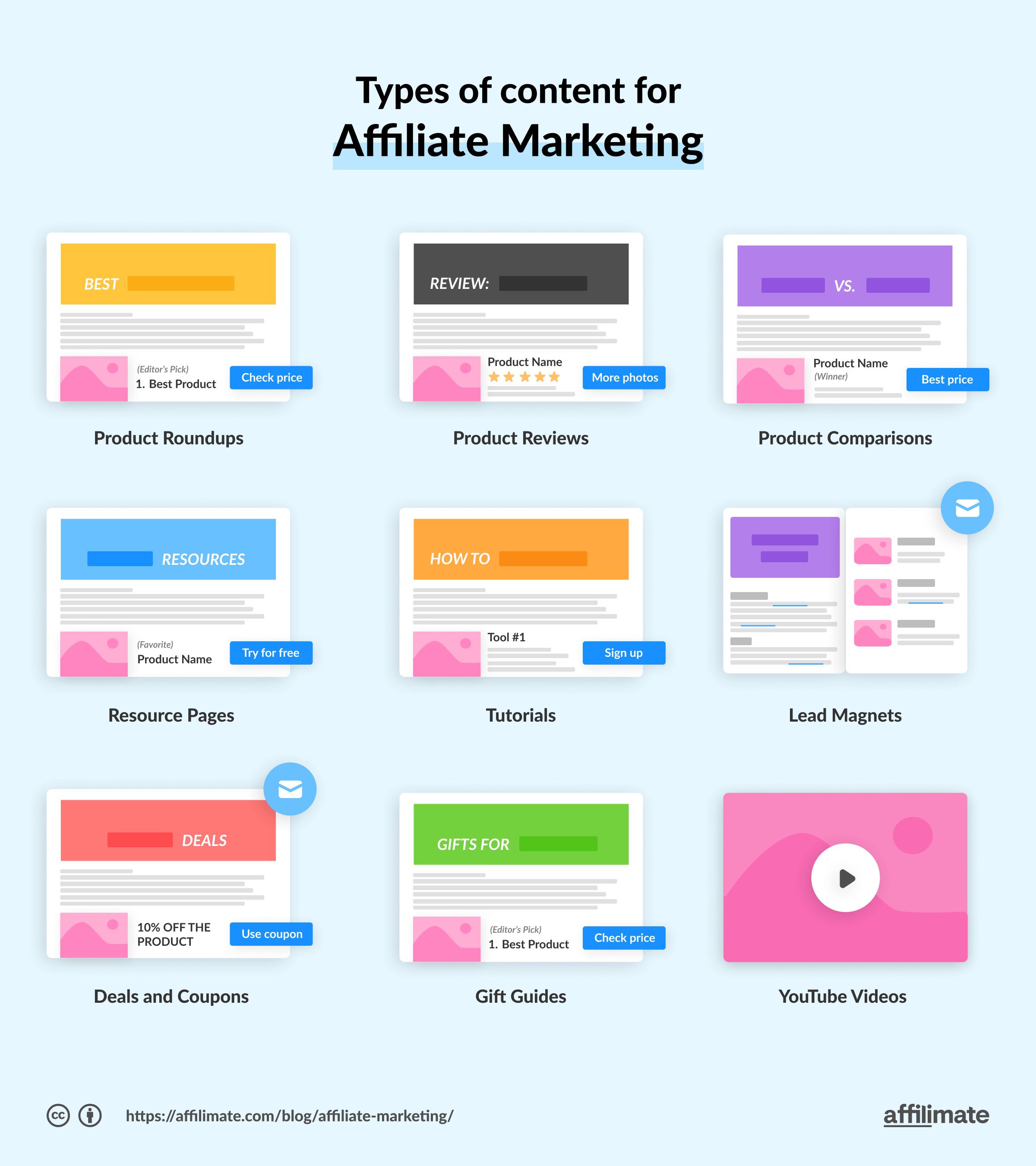
- Product reviews: Nearly 97% of consumers look at online reviews before making a purchase decision, so product reviews are a staple amongst affiliate marketers.
- Product roundups: Roundups based on a specific theme or category lead different readers to relevant products and diversify your revenue away from a single link.
- Product comparisons These are similar to product reviews but place similar products side-by-side to highlight pros and cons. Product comparisons are extremely helpful to orient audiences.
- Resource pages: Resource pages are compilations of your favourite tools and resources. Resource pages that focus on solving a problem for your audience won’t be the highest converting pages but will help to present you as an expert to your audience and gather all of your affiliate links in one place.
- Tutorials: Tutorials are an opportunity to highlight exactly how a product works in an easy step-by-step process. Customers are likely to trust and buy a product when they can see exactly how it will work for them.
- Ebooks: Topics don’t always fit into a nice blog post or or email. This is where ebooks come in. They give you an opportunity to do a deep dive into a topic. As a bonus, you can use the ebook as a lead magnet to build your email list.
Affiliate content also goes by other names, such as commerce content. But no matter what you call it, don't forget to include an affiliate disclosure which informs your audience that you may earn a commission if they buy from your links.
Once you've chosen a content format, it's time to optimize the page for conversion.
Conversion 101 for new affiliates
Here are some of the most important ways you can do that without a ton of complicated plugins.
Button placement: Good button placement and design is particularly important for getting people to respond to your call to action, whether that be to sign up, subscribe, or learn more. Button placement should be noticeable, with CTAs that spark interest like "Read more reviews", "Check the price", and "See more photos".
Here's an example of a product review with a prominent button above the fold of the browser:
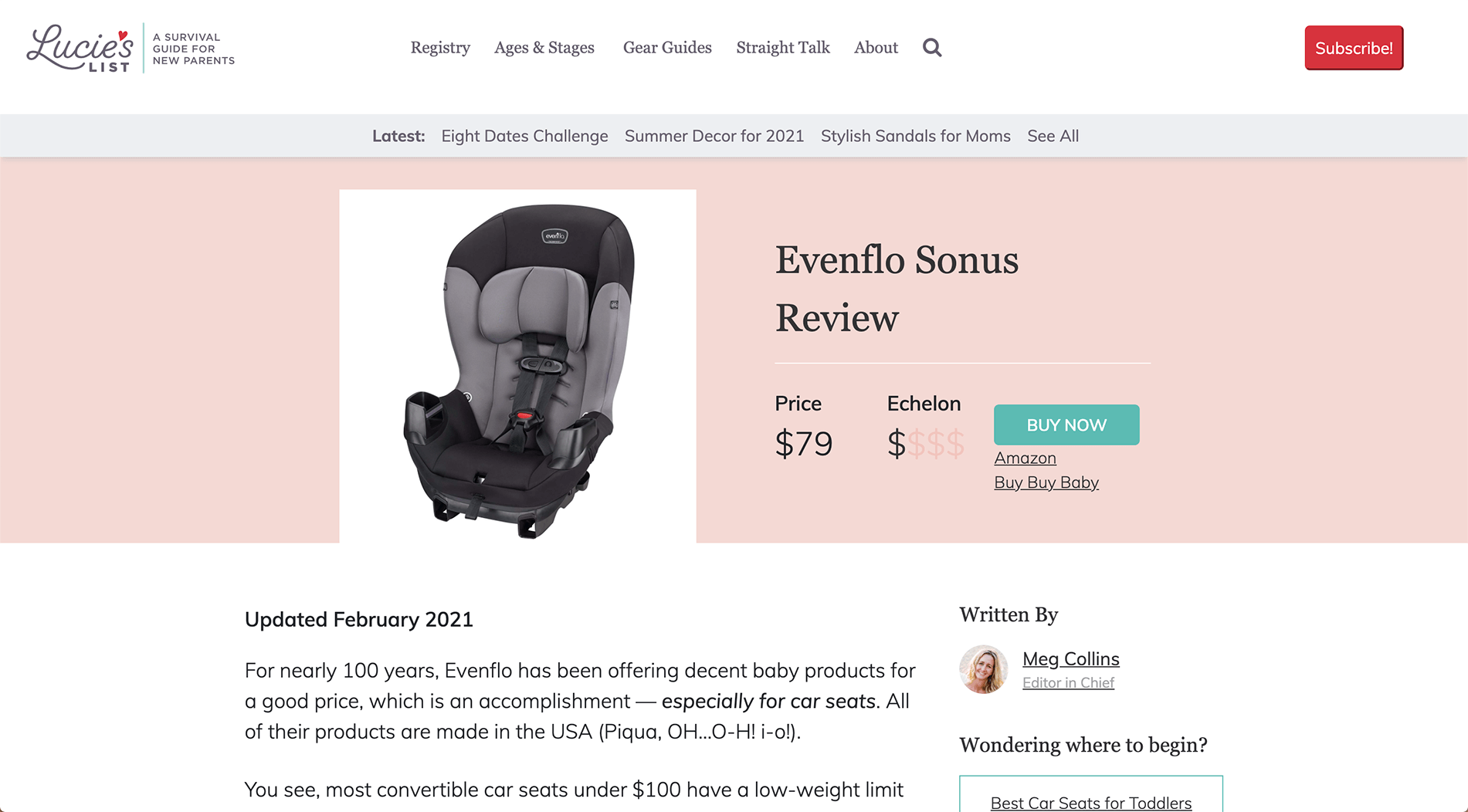
Callouts: Also called text boxes, these visually separate important information from the rest of the blog. You can use them for compelling quotes or statistics that influence your visitor's decision in their buyer journey.
Here's an example from Themeisle's review of Elementor:

Positive reviews and install count both act as social proof that this product works great.
Graphs, charts, and comparison tables: As much as quality written content is necessary, visual summaries of information are just as important. Give users a glance overview of key details by including graphs and charts.
Here's an example from a site comparing smart watches for kids:
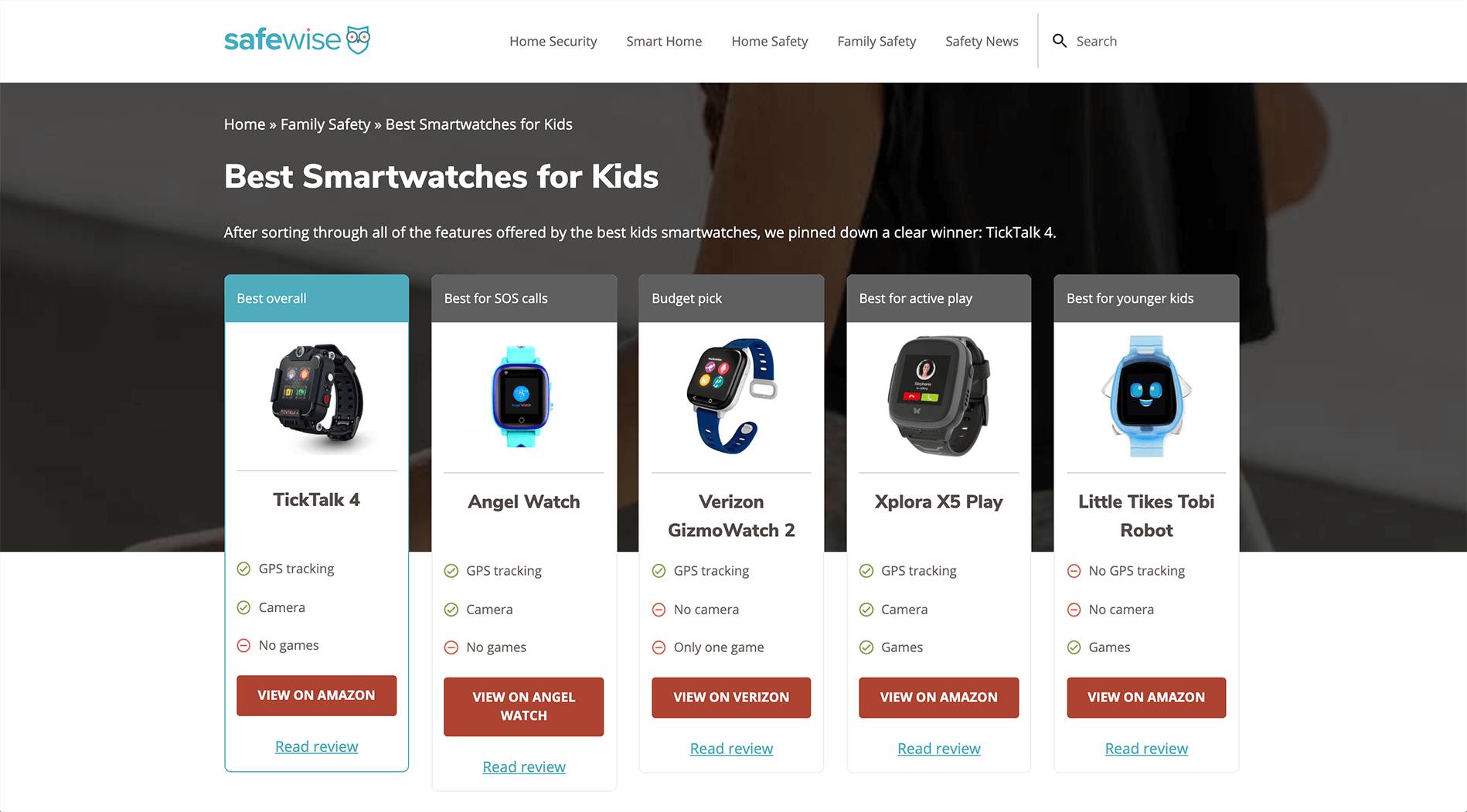
Images: People often make purchase decisions based on emotion. Images that reinforce a particular feeling embodied by your content nudge readers towards converting. Even better if you can include photos of the results a product has helped you to achieve.
For example, in this makeup review, the author shows themselves trying each product:
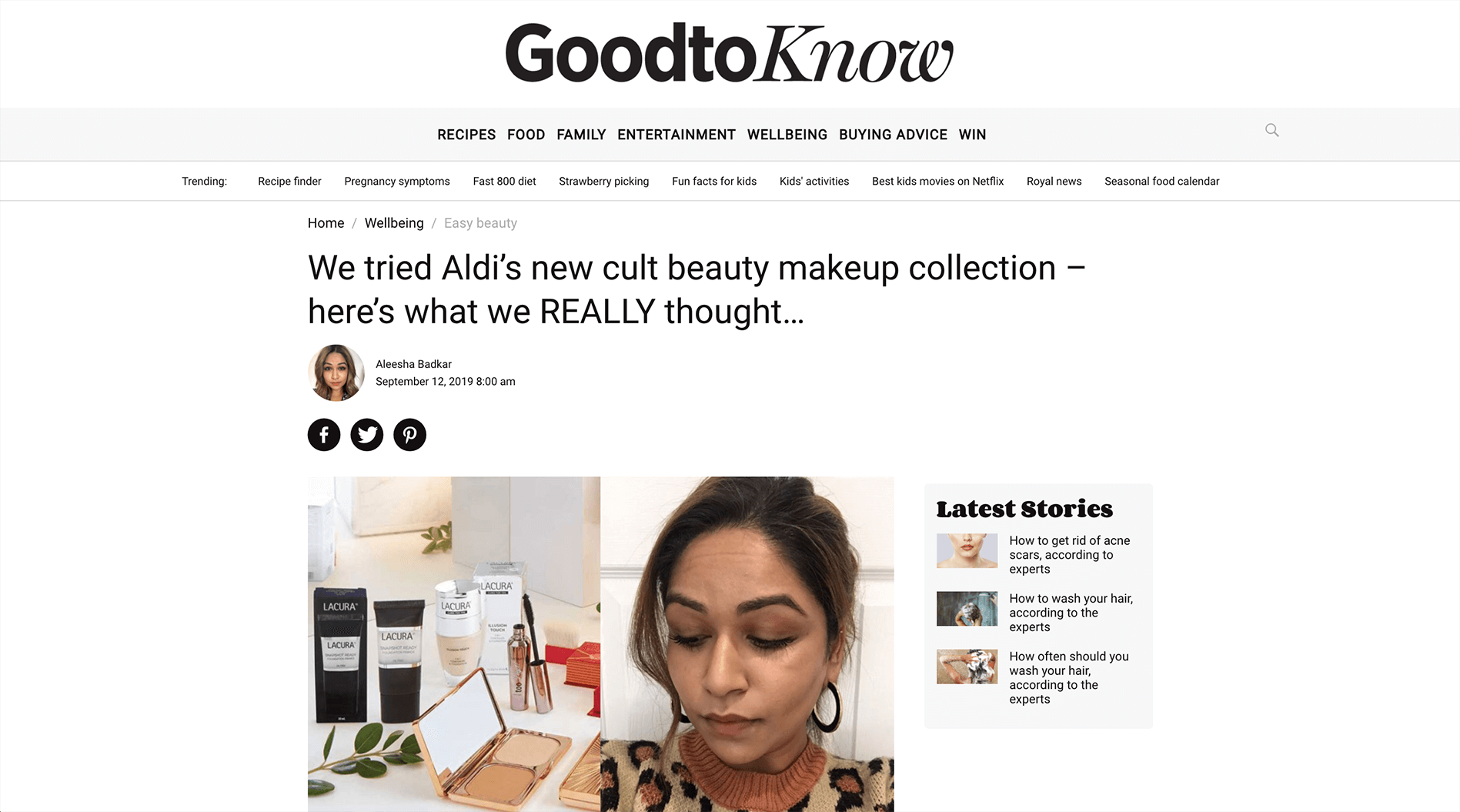
Banners: Banners may be eye-catching and stand out, but they also are easily ignored due to a “banner blindness” and people tend to ignore banners entirely. You can include them, but make sure to have plenty of tasteful text links and buttons — those will be your main conversion drivers.
Popups: Although controversy surrounds popups because they can be annoying, they are also highly effective at converting your readers. Each popup is an opportunity to recapture audience members through strategies like discount codes and limited time offers.
Step 5. Drive traffic to your affiliate site
Now it's time to drive traffic to your carefully selected offer. This can be done through social media platforms, SEO blog posts, and email lists.
The key is you want to either reach people who are looking to buy, or capture their email address to educate and inform readers before prompting the purchase.
Here are some of the best free traffic sources for affiliate marketing:
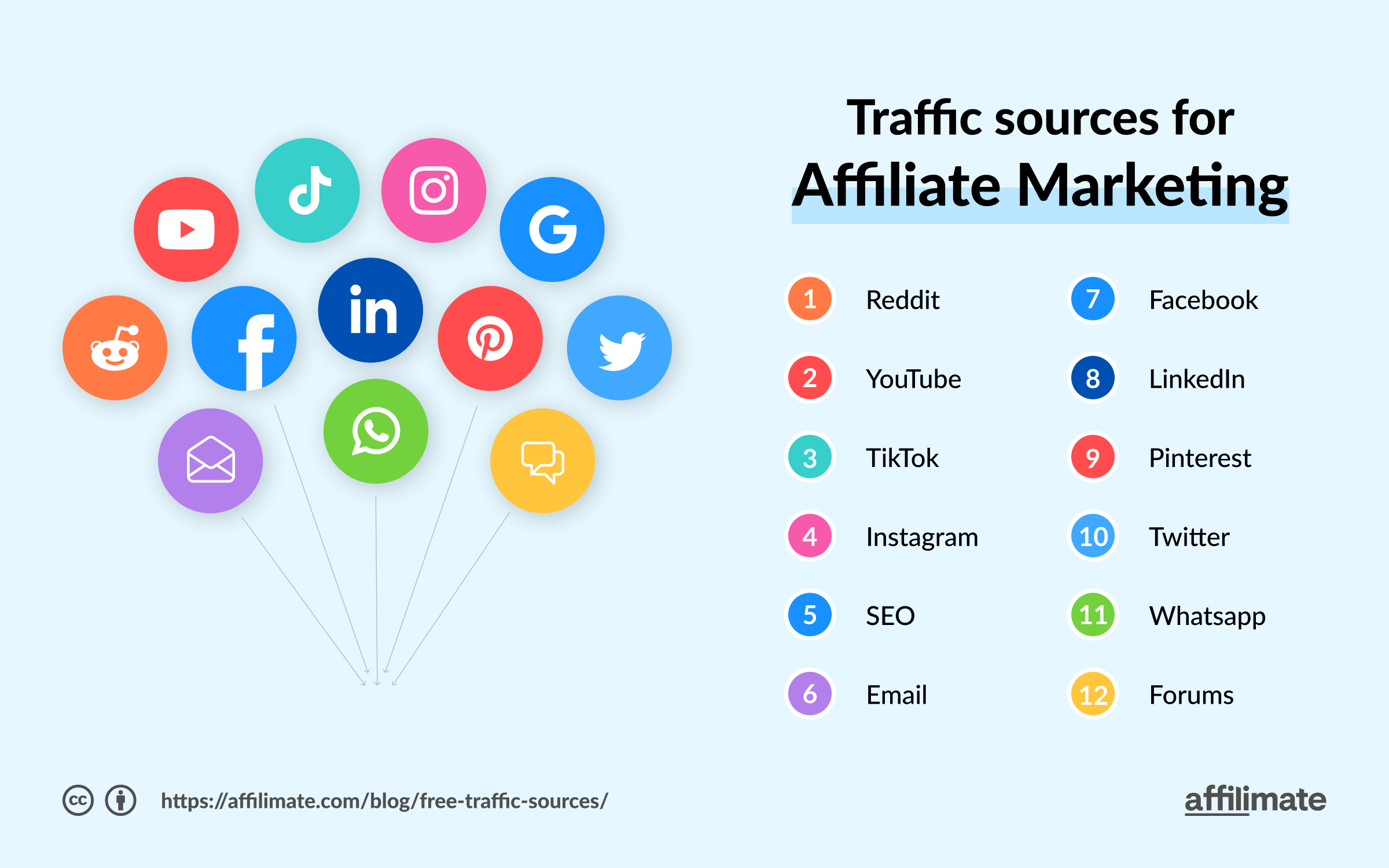
Social media sites like Twitter, TikTok, Instagram, Pinterest, and Reddit are all great free traffic sources for affiliate marketing, but they do require some time and effort to make them work.
But the most successful affiliates also invest in growing traffic through SEO.
By targeting buyer intent keywords, you can reach visitors who are heading to Google right before making a purchase. Using this technique, it's much easier to get clicks on your affiliate links and earn commissions than trying to sell to people who aren't ready to buy.
Another free traffic source we can't recommend enough is affiliate marketing through email.
The direct nature of emails means tailored messages are delivered straight to your prospects' inbox. This helps them learn more about a product and moves them towards a buying decision.
Email works great for regular product curations, sharing time-sensitive deals, and reinforcing your top recommendations to your audience.
Step 6. Build a simple affiliate marketing funnel
An affiliate marketing funnel is a carefully laid out process that guides users from the start of their buyer journey to the point where they are a repeat customer.
Funnels are critical if you need to take an audience who isn't ready to buy (such as most visitors from Pinterest or other "inspiration"-based channels), and warm them up to your brand and offer.
By using a funnel, the reader sticks with you through all the stages of the buyer's journey. Even if they joined you weeks or months before they're ready to make a purchase.
Here's how you can visualize the buyer's journey:

The buyer’s journey consists of four main stages:
- Awareness: The prospect notices and identifies their problem
- Consideration: The prospect considers possible solutions to their problem
- Conversion: The prospect makes a purchase decision and thereby becomes a customer
- Loyalty: A positive customer experience leads to trust and repeat purchases
Here's how to practically implement a simple funnel, so you can convert cold traffic into customers.
FUNNEL OR NO FUNNEL?
It’s possible to send customers directly to the affiliate website through single pieces of content, especially with low-ticket offers that have straightforward value propositions. Funnels are an especially suitable strategy for high-ticket affiliate programs that require a longer education period before customers are ready to buy.
Stage 1. Collect leads through email affiliate marketing
After a visitor lands on your website, it's time to convert them to an email list using free offer opt-ins. This can be a downloadable PDF guide, email course, resource library, or other gated content.
Getting started with email might sound intimidating, but it's an early investment you won't regret.
Read our related post about affiliate marketing through emails for how to get started, step by step.
Further reading: Email Affiliate Marketing: How To Use Emails To Boost Your Affiliate Revenue
Stage 2. Send leads to affiliate landing pages
Once a prospect is on your email list, you have better control over their buyer’s journey to guide them as needed and fill in the gaps. This is your opportunity to provide information specific to where they are in their journey.
Emails about yourself, the results a product helped you to achieve, testimonials from other buyers, tutorials and guides can all help the prospect become confident enough to make a purchase.
Once they're ready, you can link to your affiliate landing page. These are yet another space to connect with your audience, encourage them to move to the buying stage, and help you build trust before your prospect lands on the advertiser’s sales page.
Stage 3. Optimize your funnel
What makes marketing funnels incredibly helpful is they show you where to adjust and improve your processes. With a funnel, you can pinpoint the exact stage where someone drops off the journey.
When you know that, tweak it to provide an improved process for the next person through the funnel.
Stage 4. Bag repeat sales by emailing your list regularly
Customers that have made their way through the funnel are still good prospects for other offers.
Your email list now gives you the opportunity to provide additional email content that will lead them through a new buyer’s journey and guide them through the funnel for a different product.
Further reading: How to Build a High-Converting Affiliate Marketing Funnel in 5 Steps
Step 7. Track and increase your affiliate revenue
Finally, it's time to talk tracking.
Proper tracking is one of the most important aspects of successful affiliate marketing.
It's the difference between fumbling around aimlessly in the dark for your keys, or taking a step back and turning on a light switch.
Giving yourself visibility into what's working and what isn't in your affiliate marketing strategy is what helps you make more money, faster, and with fewer pieces of content.
And there is no better time than the very beginning of your affiliate website to set up a system that will scale with you. Here are the two main ways to level up your affiliate strategy with tracking:
First, get basic affiliate tracking in place
There are two types of affiliate tracking:
- Tracking a network does for you (attributing your sales and tellling you which products people bought through your links)
- Tracking you have to do for yourself (figuring out which pages, affiliate links, text and visual elements are converting).
To handle the second case, you can use SubID tracking. SubIDs are additional data that you attach to your affiliate link, which ultimately gets recorded next to every conversion that results from that exact link.
Typically, a SubID is a query parameter you can add onto existing affiliate links. Here's how SubIDs fit into your affiliate links:
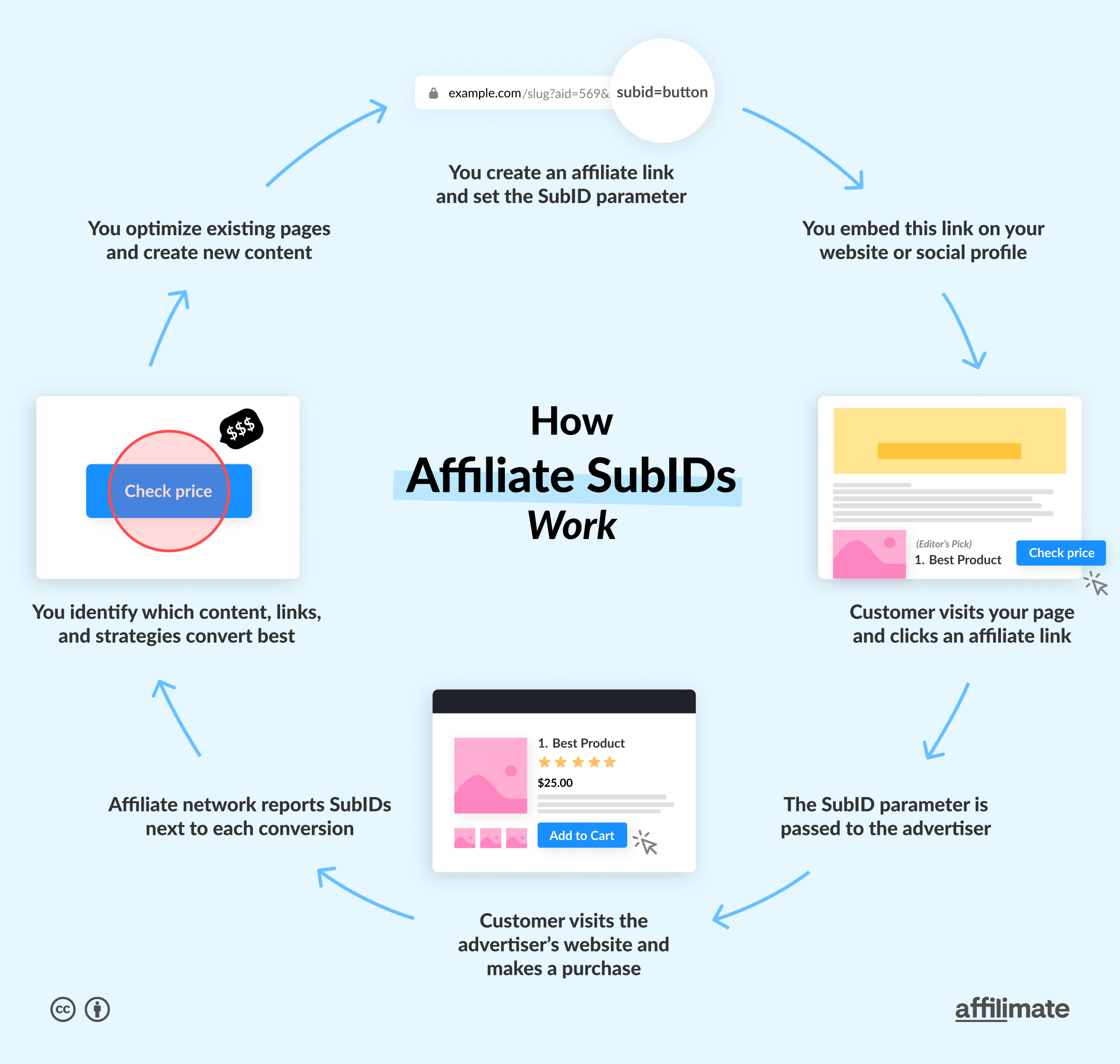
If you're familiar with Google Analytics, SubIDs work similarly to the utm_campaign parameter.
For more information on SubIDs, read our guide to SubID tracking for affiliates. It's a little technical, but you'll be grateful you set it up right from the beginning.
You can also forego doing this manually, and use an affiliate marketing tool like Affilimate to fully automate this process.
Then, start to run some tests
Now that you have tracking in place, the first step is to choose which blog post you want to run tests on. Consideration needs to be given to high traffic posts, posts with new traffic, posts with high intent but low RPM (revenue per thousand visitors).
Once you’ve chosen your blog post, run tests to assess its performance and how it can improve. Here are some ideas for tests you can run on your affiliate content:
- Adding comparison tables
- Switching the text on call-to-action buttons
- Inserting links to alternative affiliate products
- Decluttering by removing links that aren’t yielding any conversions
- Testing different link text
You can test which techniques are converting by using unique SubIDs. You want to assess not only whether the new elements are causing more clicks and revenue, but also how much the piece of content is generating relative to the number of viewers.
Again, you can use a tool like ours to automate this process without resorting to gluing together data from multiple sources in complicated spreadsheets:
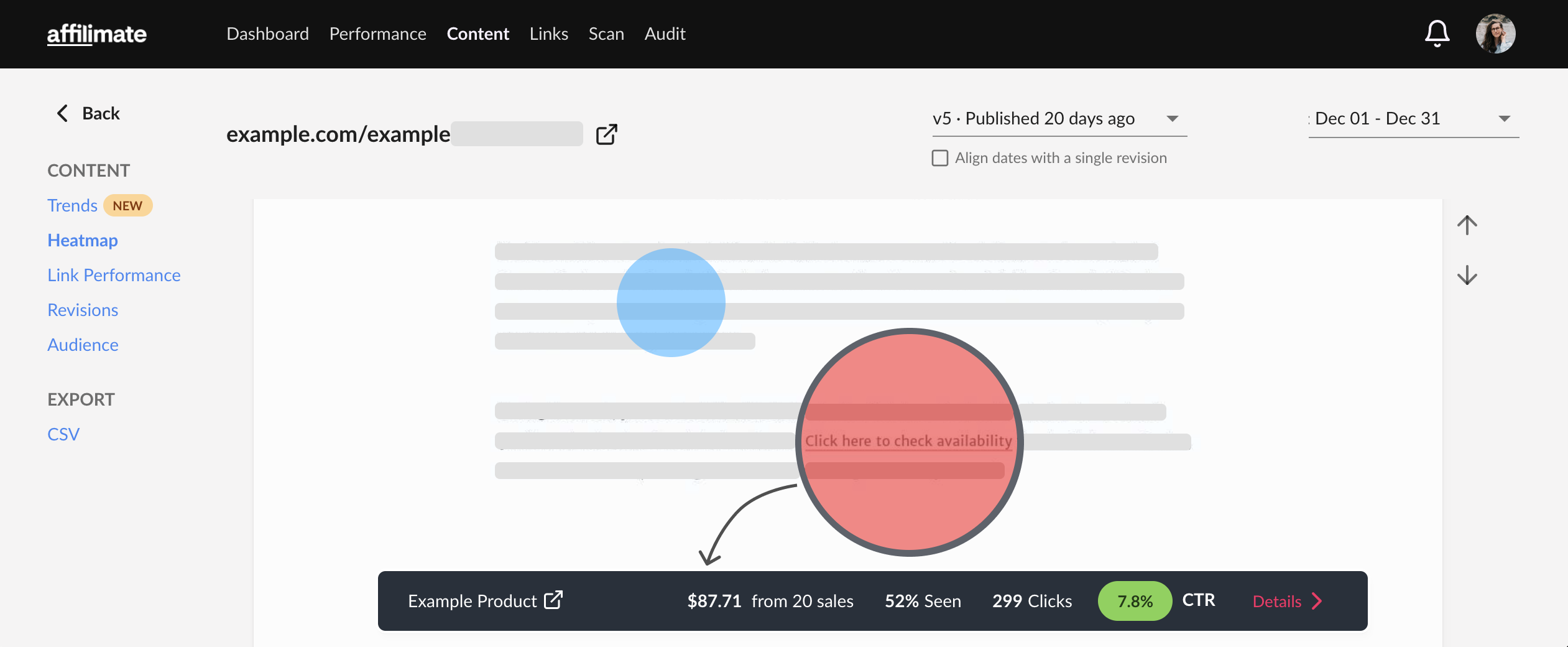
Running successful tests is also one of the most effective ways to invest in and flip websites, once you've developed a feel for it.
Get these two strategies right from the beginning, and you're several steps ahead of most affiliate marketers today.
Affiliate marketing mistakes to avoid
Once you nail the broad overview of affiliate marketing, make sure you don’t slip up on the details.
There are several small, seemingly unimportant decisions that add up to make or break your success. Here are some of the most common affiliate marketing mistakes to avoid:
- Making your intro too long. Whether you’re writing content or producing videos, you have seconds to capture your audience’s attention. Keep your intros short and sweet and make sure you’re making it clear what they’ll gain by sticking with you.
- Targeting the wrong part of the buying cycle. If your audience doesn’t understand the offer, they won’t convert, no matter how hard you try to sell. Your content should match where your audience is in the buying cycle, providing education where needed.
- Not including a clear top recommendation. Product roundups and comparisons are high-converting content, but consumers are looking for a clear recommendation. Make it easy for them to make a decision by letting them know your preference.
- Not suggesting and linking to alternative affiliate products. Consumers are growing more and more skeptical. Pushing a product as the cure to everything will raise red flags. Instead, make honest evaluations and acknowledge the benefits of alternatives. Even better is if you can capture revenue by using affiliate links for competing products.
- Not tracking affiliate metrics. The most successful affiliate marketers treat their marketing as what it is — a business. Tracking allows for revenue optimization based on data-driven insights, rather than gut instinct or guessing.
Avoid these mistakes, and you'll be doing better than 90% of new affiliate marketers who lose their readers before the very first click.
What you need to know about affiliate marketing in 2024
Consumer behavior has changed dramatically in the last year. Affiliate marketing has to keep pace with new technical and legal requirements in order to stay relevant, accurate, and privacy compliant.
Starting is the hardest step, but don’t let your efforts go to waste. Keep these affiliate marketing trends in mind to build a sustainable business model and future-proof your revenue.
1. Brands want partners, not just affiliates
Affiliate marketing hasn’t always had the best reputation, but with a bit of a refresh, the win-win business model is still full of promise for brands and publishers alike.
This shift comes in the form of a rebrand from affiliate marketing to “partnership marketing”.
Brands and businesses are moving towards quality partnerships instead of quantity relationships. Before, brands would have their business promoted by thousands of influencers and content creators. Now, greater selectivity is being employed to choose the right people to represent and promote them.
Creators that have genuine connections with their audiences will be favored by brands to promote their image in a meaningful way. Brands are looking for creators that will use their audience trust to represent them with authenticity and integrity.
You can demonstrate this to brands with engagement metrics, such as an email list with solid click-through rates or a social media account with an active comments section. This also gives you leverage for negotiating higher commissions.
2. Diversification is more important than ever
Success in the affiliate space is seldom tied to a single income source. Robust income as an affiliate means diversifying your streams and being a part of a variety of programs. If you stick to only one program, rate cuts and program adjustments are a massive blow to your expected earnings.
This is exactly what happened to Amazon affiliates both during the early stages of the pandemic and again in early 2021.
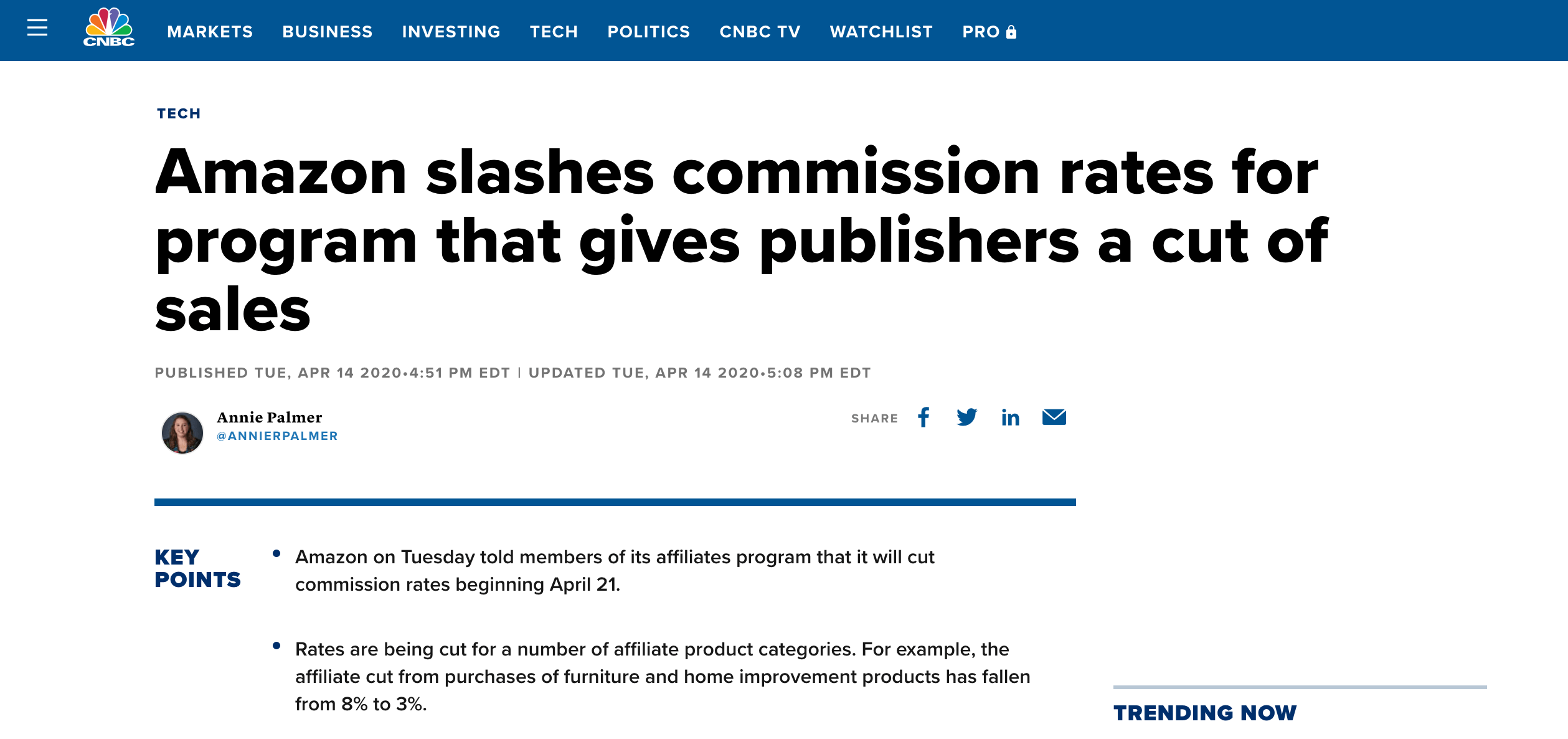
Programs that rarely engage with their affiliates on a one-to-one basis also offer very little recourse for affiliates when things go wrong. Although programs like Amazon can be convenient and lucrative, introducing alternatives guard against dramatic loss of income as well as add to your current earning potential.
3. Multi-channel is your moat
A multi-channel approach supersedes any results that can be achieved through a single platform.
Combining both “owned” platforms, such as your website, blog and email lists, with “rented” platforms such as Instagram, YouTube, and Pinterest provide you with the best of both worlds.
Social media is a key component of expanding your reach and gaining new audience members. YouTube alone ranks as the second most popular search engine globally. Content that succeeds across social media platforms drive your target audience to your “owned” online space, namely your website.
Reaching your target audience and creating a direct connection with them as an affiliate marketer requires a multi-channel approach in order to achieve the desired result for driving revenue and creating repeat buyers. Rented platforms are a great way to start an audience, but driving traffic to owned media is essential to future-proof your business against changes to social media platforms.
Ready to take action?
Diversification and multi-channel approaches play a big role in future-proofing your affiliate marketing business.
That means most successful affiliates end up juggling multiple logins and platforms to make the most of their business.
Instead of logging into what feels like a million hard-to-use dashboards, you can use Affilimate to access one central location for all information relating to your affiliate programs.
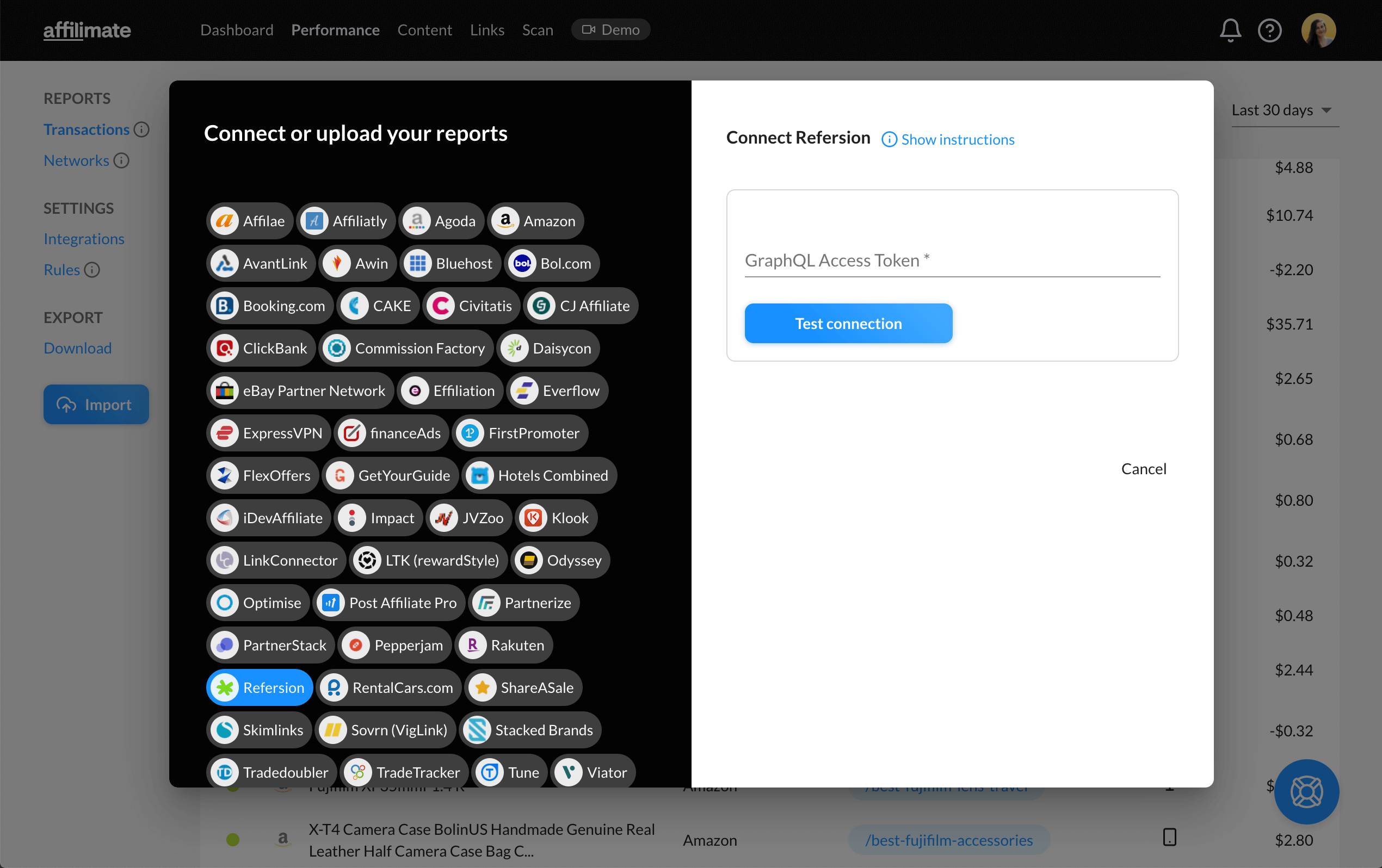
The Affilimate dashboard also gives you an at-a-glance understanding of how your affiliate marketing content is performing. Keep track of your revenue, identify top-performing content and gain insights into optimization all in one place.
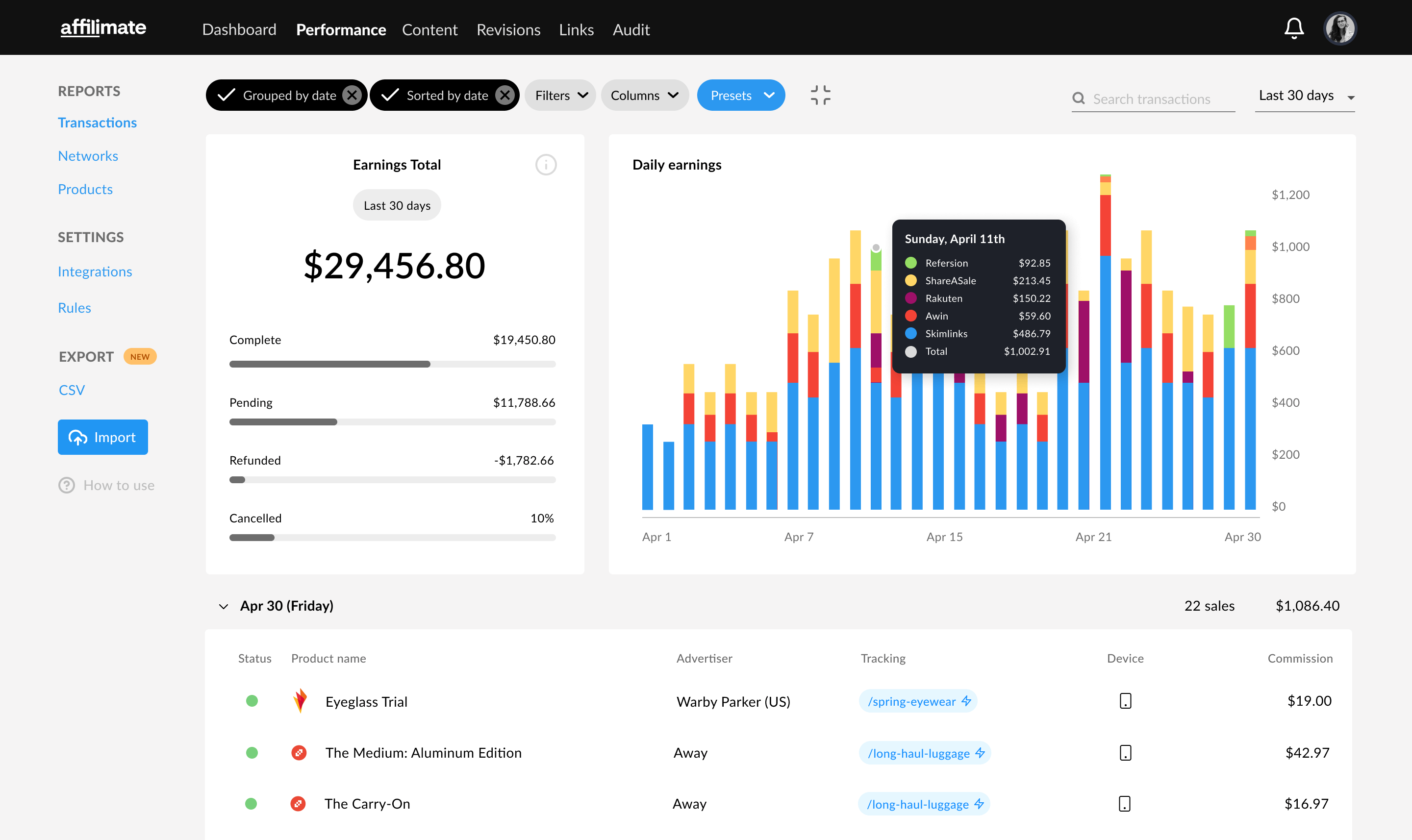
Check out Affilimate's Free 15-Day Trial to bring all your affiliate networks into a single dashboard and attribute your conversions back to content on your website.
Or, sign up for our email list below for free content to help you level up your site and grow your affiliate revenue from scratch.
